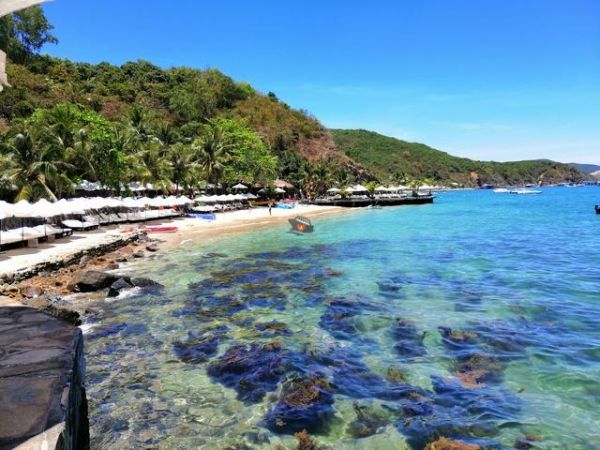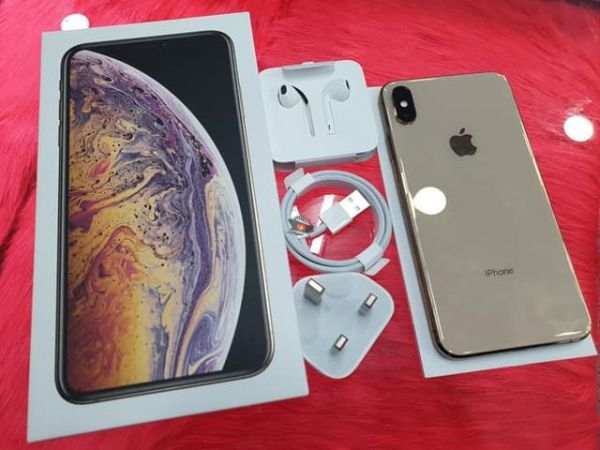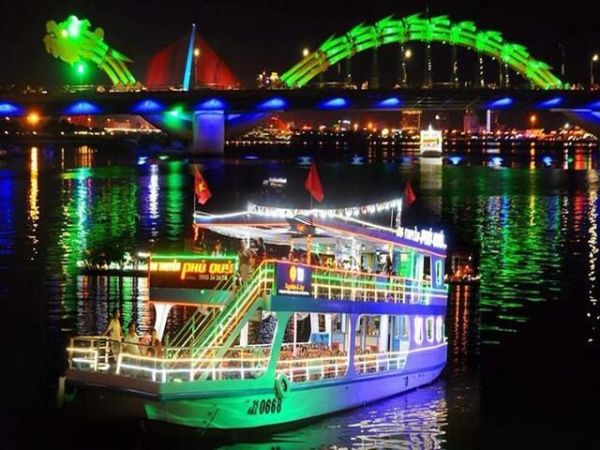PLAN YOUR TRIP TO NHA TRANG

Apply for your visa (if you’re staying longer than 15 days)
The Vietnamese don’t make it too easy for you to enter their country. In fact, if you’re exceeding 15 days here, the process is downright tedious, but it’s necessary nonetheless. Make sure you start this process a couple of weeks before you travel at the latest. Here’s what to do:
Apply for a letter of admission from the Vietnamese Embassy. There are various companies that you can apply to. You may book from Visa Extension Office and they will do for you a letter within 2-3 days of application. This costs a rough $30 USD
2. Once received, print the letter
3. Print the visa application form online and fill it out
4. Prepare recent x2 passport photos
5. Exchange some USD before you fly as this is the currency you have to pay for your visa with at the airport (a 30-day single entry visa costs $35)
Make sure all of the above is in your hand luggage on arrival at the airport as the visa process comes before baggage collection.
Be prepared for Airport visa queues
And after all that, the process continues at the airport. The visa application queues in Vietnam are notoriously bad, and if you arrive at the back of the pack you could be waiting up to 3 hours on arrival at the airport. Imagine that after a long-haul flight?
Travelista TIP: Ensure your seats are at the front of the plane and when you step off the plane, do not stop for the toilet. Power walk (or run!) straight to the visa application desk and try to be the first there. After a long flight, the last thing you want to do is wait around any longer.
Check your travel vaccinations
If possible, book an appointment with your GP 6-8 weeks before you travel to find out which travel vaccinations you are due. There are a few new vaccinations on the market now which your GP may offer you, such as Japanese Encephalitis, but it doesn’t come cheap. Decide for yourself what you feel comfortable with but I would advise ensuring you’re covered for the basics at the very least.
US Dollars vs Viet Nam Dong
You will need both US Dollars and Vietnamese Dong for traveling around Vietnam. US dollars are most commonly used for anything touristy e.g. booking a tour, booking domestic transport, or paying for a hotel. Vietnamese Dong is most commonly used for more local enterprises e.g. restaurants, bars, shops, and market stalls. You can withdraw Dong from an ATM on arrival but make sure you’re armed with USD to pay for that visa. If you have a choice between paying in Dong or Dollars, Dong usually works out cheaper.
Travel Agents are your Friends
Don’t worry about booking every aspect of your trip before you arrive. Every town worth visiting e.g. Hanoi, Sapa, Hoi An has a travel agency around every corner. Using these travel offices is an extremely convenient way to plan additional elements of your trip, whether it’s an internal sleeper bus, day tour, or 3-night package.
Book accommodation for your first night
Arriving in Hanoi or Ho Chi Minh City can pose somewhat of a culture shock, especially if you haven’t traveled much in Asia before. The streets are hectic, the scooters are crazy and there isn’t a great deal of tourist information to guide you through. This considered I would strongly recommend booking your first couple of nights. This way you know your final destination and can just jump in a cab as soon as you complete the visa-gate.
Get ready to haggle
Haggling/bartering is very much a part of Vietnamese culture, especially when tourists are involved. You can try out your negotiation skills in markets, independent shops, and even beauty and massage salons. You can either ask for a “better price” or tell them what you’re willing to pay. If they let you walk out of their shop without discounting the price further, you know you’ve gone too low. In restaurants and bars, prices are fixed, unless it’s happy hour!
Taxi Knowhow
There are official taxi companies in all major cities, all of which are dirt cheap and use a fair meter system. However, you’ll notice that many taxi drivers park up around tourist points of interest and try to give you a ride. Do not get in these taxis. We did this in Hanoi and the driver had rigged the meter to go up so ridiculously fast. If we hadn’t have taken a few rides before this we wouldn’t have noticed, but as soon as we noticed we jumped out straight away. It was only a minor scam but it’s not worth the risk. As a rule of thumb, always try to flag down an official city taxi. You won’t have to wait too long.
The Sleeper Buses are awesome
If you’re planning to travel from city to city and are on a budget, the sleeper buses are your answer. Before arriving in Vietnam I had never seen anything like it. The individual seats are more like beds, allowing you the extend your legs fully and recline until you’re lying down. We traveled from Hanoi to Sapa, Hoi An to Nha Trang, and Nha Trang to Ho Chi Minh City by these buses and paid about $15 each per journey. Most sleeper buses are very clean and have a toilet on board. It’s not going to be the best night’s sleep you’ll ever have, but it saves you spending money on a hotel for the night and ensures you don’t lose days in transit. You can book the buses from any booking office/travel agent you stumble across, and only need to allow 1 day’s notice. If budget isn’t an issue or you’re very tight on time, flying is the best option.

What to wear
The general dress code is pretty laid back in Vietnam. Shorts/skirts and lightweight T-shirts and vest tops will be your daily staples. The only time you need to think more carefully about what you’re wearing is if you visit any temples or mosques. Girls, pack a pashmina so you can wrap it around your shoulders, and guys and girls should both bring a pair of lightweight long trousers. These also come in handy on buses and planes where the air conditioning gets icy cold.
Wi-Fi is Everywhere
If you want to stay connected on your travels, have no fear! In my experience here, the Wi-Fi is fantastic here and all cafés, restaurants, hostels, and hotels have it for free. Even the most budget hostels will have it in the rooms.
Travel With Plan Better Than Unexpected













